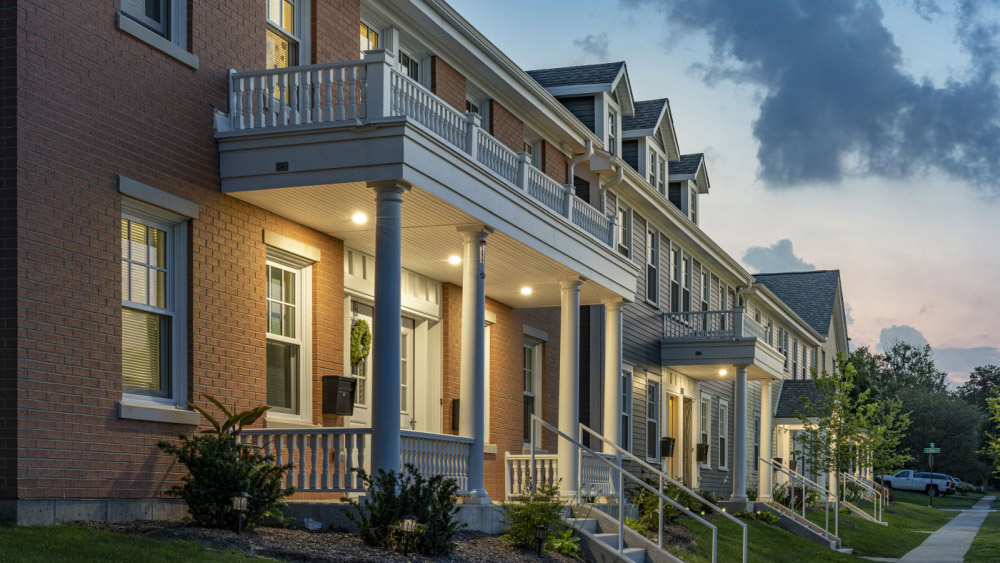Architectural design can enhance resident well-being
4/17/2023

Architectural design can play a crucial role in enhancing resident security, community, and well-being in living environments, affordable housing, and community spaces in several ways:
1. Design for safety and security: Architects can design living environments, affordable housing, and community spaces with safety and security in mind, such as implementing secure entrances, well-lit common areas, and surveillance cameras. This can help reduce the risk of crime and promote a sense of safety and security for residents.
2. Design for community spaces: Community spaces such as communal kitchens, gardens, and outdoor gathering areas can promote social interaction and a sense of community among residents. Architects can design these spaces to be inviting and functional, with features such as outdoor seating, shade structures, and landscaping.
3. Design for accessibility and mobility: Affordable housing should be designed to be accessible and accommodating for residents with mobility challenges, such as those who use wheelchairs or have difficulty walking. This can include features such as elevators, wide doorways, and ramped entrances.
4. Design for health and well-being: Architects can design affordable housing to promote the health and well-being of residents. This can include features such as green spaces, access to natural light and ventilation, and materials that are non-toxic and hypoallergenic.
5. Design for sustainability: Affordable housing can be designed to be sustainable, with features such as energy-efficient appliances, solar panels, and rainwater harvesting systems. This can help reduce utility costs for residents and promote a more sustainable community.
Architectural design can also enhance resident security by creating defensible space, which is a term coined by architect Oscar Newman in the 1970s. Defensible space refers to a design strategy that aims to reduce crime and increase resident safety by creating a physical environment that allows residents to easily monitor and control their surroundings. Here are some ways that architectural design can create defensible space:
6. Territoriality: Creating a sense of ownership and territoriality among residents can also enhance security. This can be achieved by designing buildings and outdoor spaces in a way that creates distinct boundaries between public and private areas.
7. Access control: Controlling access to buildings and outdoor spaces is another effective way to enhance security. This can be achieved by using physical barriers such as fences, gates, and walls to restrict access to certain areas.
8. Maintenance and upkeep: Ensuring that buildings and outdoor spaces are well-maintained can also enhance security. A well-maintained environment is less likely to attract criminal activity and can give residents a sense of pride in their community.
Architectural design can enhance resident well-being by prioritizing safety and security, designing community spaces, accommodating residents with mobility challenges, promoting health and well-being, and designing for sustainability.
Cordogan Clark is committed to designing better living environments and communities by creating affordable housing, mixed-use developments, transit-oriented developments, and sustainable projects that promote community engagement and enhance quality of life. Their designs create more livable and sustainable communities where residents can thrive.
Featured Photo: 1212 Larkin, Elgin, Illinois, Full Circle Development (Photo Credit: James Steinkamp Photography)